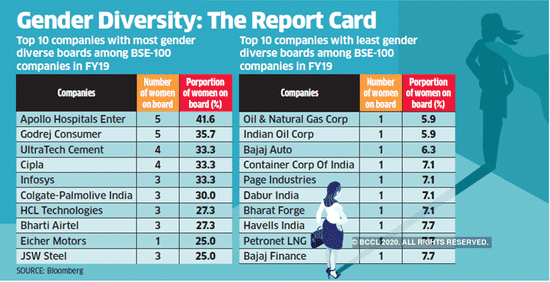While 87 percent of S&P 500 companies have two or more women directors, the corresponding number for Indian boards stands at 54 percent.” Indian companies have lagged behind as far as a diversified board is concerned but leading the pack among prominent Indian companies is Apollo Hospitals which has 42 percent, women, on its boards. The least diversified BSE 100 board is that of the public sector undertaking ONGC which has 6 percent representation of women. Public sector undertakings (PSUs) have been lagging behind in improving the diversity quotient of their boards. Since the Companies Act mandates one woman director to be on the board, of the 91 companies studied, 24 have been consistent in having only a single woman director through each of the past five years.
This despite the fact that women in leadership roles in companies have displayed far greater innovation, more strategic thinking and thus more effective. But the male mindset continues to dominate as the following table shows us:
Have you ever checked the gender diversity quotient of your dream Indian company? Maybe, you never thought this was a key component in assessing the strength of the Indian workforce.
If you go by the recent Bloomberg data on gender composition of the number of board members in 91 Indian companies of the BSE 100 index, you would have felt comforted by the fact that the median number of women doubled in the past five years, but they still constitute a small proportion of the total board members. The index reveals that the median number of women on an Indian board was two in 2018-19, up from one some five years ago. However, women constituted only 14 percent of the board, slightly higher than the median 10 percent half a decade ago.
These numbers show up poorly when compared to the US Spencer Stuart Board Index which reveals that “nearly one-fourth of the directors of S&P 500 companies are women, with boards having 2.6 female directors on average.

Credit: Economic Times

